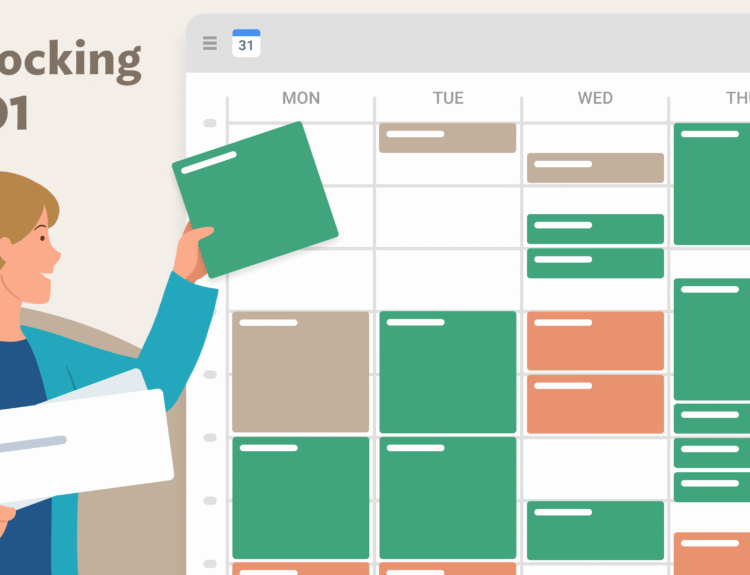Setting goals is easy. Achieving them? Not so much.
We’ve all set goals that sounded great on paper—like getting fit, saving money, writing a book, or starting a business—only to abandon them a few weeks (or days) later. The problem isn’t a lack of motivation or willpower. More often, it’s that the goals we set aren’t realistic, specific, or actionable.
The key to success isn’t just about ambition—it’s about strategy. In this post, you’ll learn how to set realistic goals you’ll actually achieve, with practical tips to help you stay focused, motivated, and on track.
Why Setting Realistic Goals Matters
Realistic goals are essential because they:
- Build confidence: Achievable goals keep you motivated and prevent burnout.
- Create momentum: Small wins lead to bigger accomplishments.
- Improve focus: Realistic goals help you prioritize your time and energy.
- Reduce stress: Unrealistic goals create pressure and frustration.
Think of your goals like a staircase. Each step should be something you can realistically climb—challenging enough to stretch you, but not so high you fall trying.
Step 1: Define What You Truly Want
Before you set any goal, ask yourself: What do I really want, and why?
This might seem obvious, but many people chase goals they think they should pursue—like earning a certain income, getting in shape, or hitting a milestone—without reflecting on their personal values or motivations.
Ask yourself:
- What do I want to achieve in the next 3, 6, or 12 months?
- Why is this important to me?
- How will my life improve if I accomplish this?
- Am I doing this for myself or to meet someone else’s expectations?
Example: Instead of setting the vague goal, “I want to lose weight,” define it in personal terms:
“I want to lose 10 pounds so I can feel more energetic, confident, and healthier for my kids.”
Step 2: Use the SMART Goal Framework
SMART goals are:
- Specific
- Measurable
- Achievable
- Relevant
- Time-bound
Example:
Instead of “I want to start exercising,” try:
“I will do 30 minutes of home workouts three times a week for the next two months.”
This is:
- Specific: 30 minutes of home workouts
- Measurable: Three times a week
- Achievable: Doesn’t require a gym or lots of time
- Relevant: Tied to personal fitness goals
- Time-bound: Two-month commitment
When goals are SMART, you can track progress and celebrate milestones, which keeps you motivated.
Step 3: Break Goals Into Small, Actionable Steps
Big goals can feel overwhelming, which often leads to procrastination or quitting. The solution? Break your goal into bite-sized tasks.
For example, if your goal is to start a blog, your steps could be:
- Choose a niche and blog name
- Set up a free website (e.g., WordPress or Squarespace)
- Write your first post
- Create a weekly writing schedule
- Share your blog with friends or on social media
Each small task should feel doable. Checking off these mini-goals gives you a sense of progress and keeps the momentum going.
Step 4: Create a Plan and Schedule It
A goal without a plan is just a wish.
Once you’ve outlined your small steps, block time in your calendar to work on them. Treat your goals like non-negotiable appointments.
Tools that help:
- Digital calendars (Google Calendar, Outlook)
- To-do apps (Todoist, Notion, Trello)
- Journals or planners for tracking habits and progress
Tip: Start with 1–2 focused goals. Spreading yourself too thin makes it harder to stay consistent.

Step 5: Anticipate Obstacles and Plan Ahead
Every goal has its challenges—lack of time, self-doubt, distractions, unexpected setbacks.
The key is not to avoid obstacles, but to anticipate them and prepare.
Try this exercise:
- Obstacle: “I won’t have time to exercise.”
- Plan: “I’ll set a 30-minute workout reminder for 7 a.m., and if I miss it, I’ll walk during lunch.”
Other helpful strategies:
- Use habit stacking: Link new habits to existing ones. (e.g., “After I make coffee, I’ll do 10 minutes of journaling.”)
- Limit decision fatigue: Prep the night before (e.g., lay out workout clothes, plan meals, make a to-do list).
Planning for roadblocks makes it easier to stay committed when motivation fades.
Step 6: Track Your Progress
Tracking your progress keeps you accountable and shows how far you’ve come.
You can track:
- Daily habits (using a habit tracker app or journal)
- Weekly goals met
- Milestones reached
Celebrate small wins: checking off tasks, finishing a chapter, completing a week of workouts—every bit counts.
Reflection prompts:
- What worked well this week?
- What got in the way?
- What can I adjust for next week?
Tracking keeps your goal visible and reminds you that progress is a process.
Step 7: Stay Flexible (But Don’t Give Up)
Sometimes life gets in the way. You miss a few workouts. You don’t hit a sales target. The important thing isn’t perfection—it’s persistence.
Realistic goals are flexible. Adjust timelines, reevaluate priorities, and change your approach if needed—but don’t quit.
Example: If you planned to journal daily but it’s too much, scale back to 3 times a week.
It’s better to adjust than abandon your goal entirely.
Step 8: Build Accountability and Support
You’re more likely to achieve your goals when you’re not going it alone.
Accountability ideas:
- Tell a friend or family member
- Join a goal-setting group or online forum
- Hire a coach or mentor
- Use social media to share progress (if you’re comfortable)
Having someone to check in with boosts motivation and keeps you honest about your progress.
Examples of Realistic Personal Goals
Health & Wellness
- Walk 20 minutes during lunch break 4 times a week
- Replace sugary drinks with water for 30 days
- Meditate for 5 minutes daily before bed
Career & Productivity
- Read one career-related book each month
- Block 90 minutes a day for deep work with no distractions
- Learn a new skill on LinkedIn Learning twice a week
Finances
- Save $50 per week for the next 3 months
- Track all expenses using a budgeting app
- Cancel one unused subscription
Personal Growth
- Journal every Sunday evening
- Call one friend or relative weekly
- Spend 30 minutes each day reading instead of scrolling
Each of these goals is clear, manageable, and adaptable to your lifestyle.
Final Thoughts: Progress Over Perfection
Setting realistic goals isn’t about thinking small—it’s about thinking strategically. Big dreams become achievable when broken into practical steps and pursued with consistency.
There will be setbacks. There will be days you want to give up. But the difference between people who dream and people who achieve is simple: they keep going, even when it’s hard.
Start small. Track progress. Adjust when needed. Celebrate wins. And remember: it’s not about doing everything—it’s about doing something consistently.






